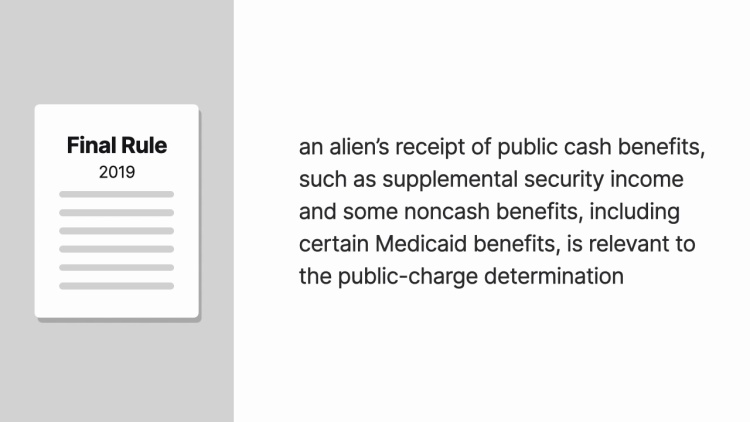City and County of San Francisco v. United States Citizenship and Immigration Services
United States Court of Appeals for the Ninth Circuit
944 F.3d 773 (2019)
- Written by Alexander Hager-DeMyer, JD
Facts
People who were unable to take care of themselves without becoming public charges were not permitted to immigrate to the United States. The Illegal Immigration Reform and Immigrant Responsibility Act amended the Immigration and Nationality Act (INA), giving consular officers and the attorney general certain factors to consider in deciding whether an immigrant was likely to become a public charge and would be considered inadmissible. The factors included age, health, family status, financial status, and education or skills. Regulations issued by Immigration and Naturalization Services added institutionalization for long-term care at governmental expense and receipt of public cash benefits to the list of factors. The Department of Homeland Security (DHS) (defendant), after notice and comment, issued a final rule to redefine the term public charge and explained its rationale for the decision. Under the rule, a determination of public-charge status would have also considered an immigrant’s receipt of non-cash public benefits, including Medicaid, Supplemental Security Income, Supplemental Nutrition Assistance Program funds, Section 9 public housing, and other federal, local, and state assistance programs. Several public-benefits categories were exempted from the rule: (1) benefits received for emergency medical conditions, (2) Individuals with Disabilities Education Act funds, and (3) benefits received by people under 21 years of age, pregnant women, or armed forces members and families. Various states, municipalities, and organizations (plaintiffs) filed suit in California and Washington federal district courts, seeking a preliminary injunction against the rule’s implementation. Two district courts granted the preliminary injunction on Administrative Procedure Act (APA) grounds. The DHS appealed to the Ninth Circuit, seeking a stay of both injunctions until litigation was finished. After finding that proper standing existed, the court addressed the states’ likelihood of success on the merits of their claim.
Rule of Law
Issue
Holding and Reasoning (Bybee, J.)
Concurrence (Bybee, J.)
Concurrence/Dissent (Owens, J.)
What to do next…
Here's why 899,000 law students have relied on our case briefs:
- Written by law professors and practitioners, not other law students. 47,000 briefs, keyed to 994 casebooks. Top-notch customer support.
- The right amount of information, includes the facts, issues, rule of law, holding and reasoning, and any concurrences and dissents.
- Access in your classes, works on your mobile and tablet. Massive library of related video lessons and high quality multiple-choice questions.
- Easy to use, uniform format for every case brief. Written in plain English, not in legalese. Our briefs summarize and simplify; they don’t just repeat the court’s language.





